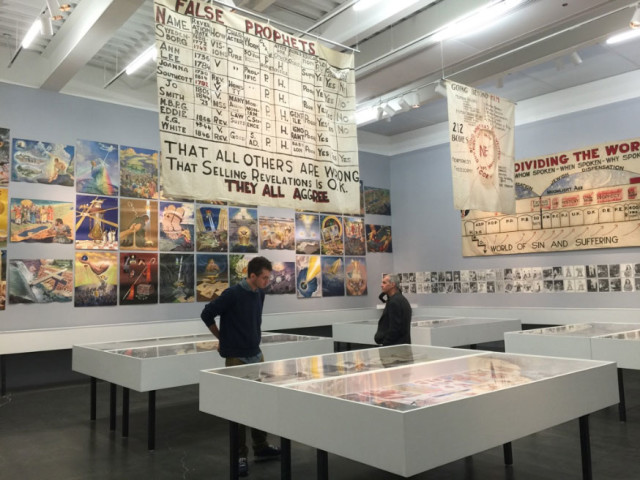
Detail of Jim Shaw’s “The Hidden World”. 3rd floor.
The number of artists who make art from found imagery and objects is now too many to count. Tumblrs and blogs are full of it and so too are the annals of art history. From Surf Clubs and The Jogging to Haim Steinbach, Robert Rauschenberg and Llyn Foulkes there’s a near bottomless reservoir of work that was made in one world and plunked into a fine art context.
I thought about this as I walked around the New Museum, mostly in awe of Jim Shaw’s three floor survey exhibition The End is Here. It’s basically two stories of art stuff—paintings, and drawings on the second floor; other people’s paintings, drawings, pamphlets, t-shirts and religious banners on the third floor. The museum reserved the fourth for Shaw’s massive cut-out theatre sets and sculptures.
Given that so much of the art looks so different, it feels like a small miracle that a cohesive show was possible. It helps that Shaw works in series, but I expect some of this success can be chalked up to the show’s curators Massimiliano Gioni, Artistic Director, and Gary Carrion-Murayari, Kraus Family Curator, with Margot Norton, Associate Curator. Every art work and its placement felt considered.
I didn’t expect to be wowed by any of this, though, perhaps because I have become a little too suspicious of the artist who plays aesthete. The practice is ubiquitous and often seems without purpose. And yet here I was, marveling at nearly every single work in this show. Why?
I’m not sure I can even answer that question, but I think it has something to do with how immersive the show feels. Unlike a Tumblr of found images or a collection of weird paintings, Shaw’s sustained efforts amount to a show that envelops the viewer in a world seldom seen yet immediately familiar. He’s not just a passing collector of Americana, he’s a true connoisseur of crap.
And like the best connoisseurs, the world he’s assembled takes over. Not a shred of hope for humanity remains. The third floor includes a room of hanging religious banners lamenting the world of sin and suffering, rows of vitrines cataloguing insane pedagogical and religious publishings, and a stack of shelves displaying kitschy ceramic busts defined by a variety of ethnographic stereotypes. You end up wondering how much time had to be invested to find this work, let alone catalogue it. (A pamphlet titled “What Alien Abduction Means for You” in the new age science and UFO sightings vitrine next to a neighboring collection of Jesus tarot cards was my favorite moment in the room.)
Another room, hung salon style, showcases his vast collection of thrift store paintings. It includes several portraits of women, one of whom has an enormous overbite, a reclining scantily clothed woman suspended by the forest below her, and a series of naked first lady paintings. Curious stuff, and perhaps not quite as depressing, but it’s a suite of six paintings on masonite delicately depicting a young woman in various flatly rendered interiors that reveals the most about Shaw’s connoisseurship. The careful patterning and attention to detail makes the piece seem like it was painted by Shaw himself.
It’s worth mentioning that as a craftsman, Shaw’s talent is indisputable. His series “My Mirage,” which opens the second floor, contains nearly 170 drawings executed in a mind-boggling array of artistic techniques. Collage, comic book, patterning, pop—it’s all there and so flawlessly executed that I initially assumed the pieces were thrift store finds. In this disjunctive narrative, which tracks a boy’s quest to understand the meaning of the world through rendered magazine covers and illustrations, we learn that high art is fucked, kids are monsters, and the world’s savior was crucified while we screwed each other.
It’s an impressive series that brings the viewer deeper into Shaw’s world, but perhaps wouldn’t amount to much if his imagination weren’t such a consistent force in the show. On the second floor alone, I saw a painting of a beaver munching on a bloody nose picked from a field of noses, a comic strip about heaven and hell that required 3D glasses, and a book cover depicting alligators dressed in suits. Many of these worlds barely felt safe.
After spending what felt like hours pouring over the smaller works on the second and third floor, I made a final trek up to the fourth floor, for Labyrinth: I Dreamt I was Taller than Jonathan Borofsky (2009) and a few other hanging paintings. Examining all the detail in the smaller works on those floors can prove exhausting, so mercifully the large scale wooden cut out theatre sets and loose canvas backdrops provide a break from that. A large free-standing cut out of a scored earth island carpeted with war torn monuments, oppressed workers and a skeletal ruler fills most of the space, alongside a vacuum cleaner shaped like a penis. Behind these sets are backdrops depicting torn buildings, Casper the Ghost and what looked like a reference to Picasso’s war painting “La dépouille du Minotaure en costume d’Arlequin.”
This depiction of reality, perhaps more than any other wasn’t one I wanted to enter—nobody was having a good time—but I appreciated it none the less. It was big and immersive and it reminded me of an important distinction between Shaw and a lot of nerd-boy connoisseurship. Most aesthetes simply present their findings—with Shaw you have to live with them.
2nd Floor

Jim Shaw’s “The End is Here” at the New Museum. Installation view.
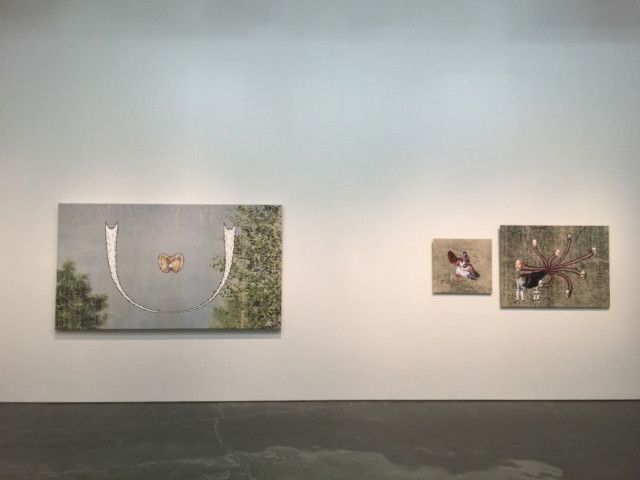
Jim Shaw’s “The End is Here” at the New Museum. Installation view,

Jim Shaw’s “The End is Here” at the New Museum. Installation view.

Jim Shaw’s “The End is Here” at the New Museum. Installation view.
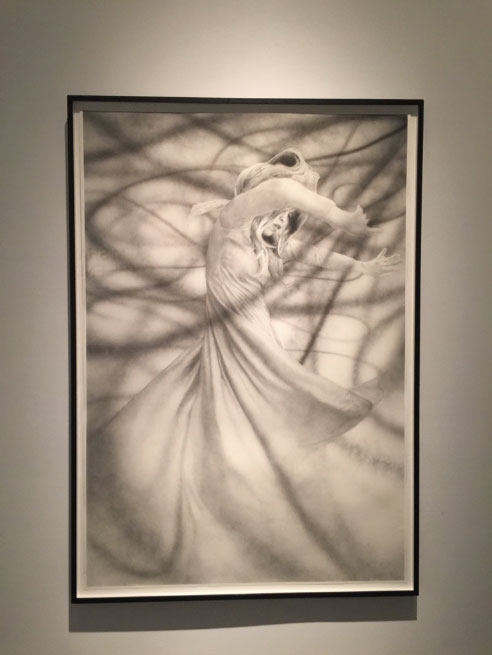
Jim Shaw’s “Gretchen Spinning”2013, at the New Museum. Incredible.
3rd Floor
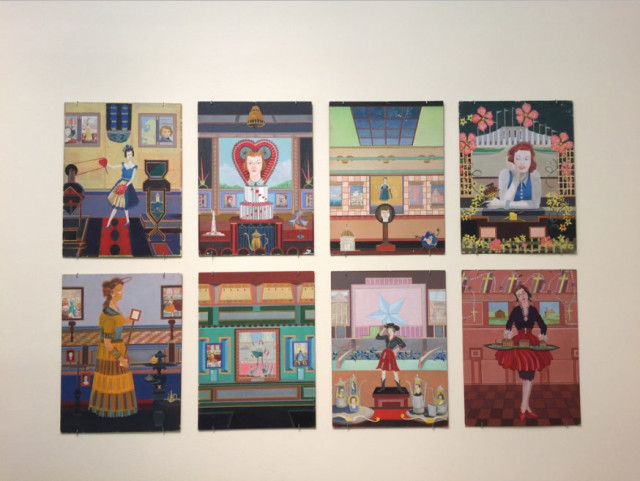
From Jim Shaw’s “Thrift Store Paintings” installation at the New Museum.
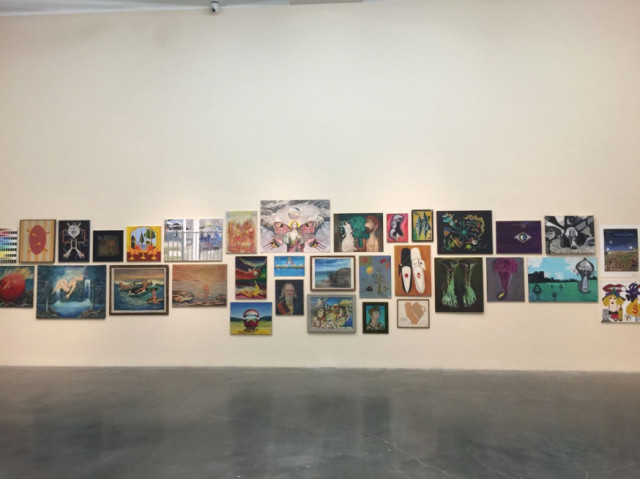
From Jim Shaw’s “Thrift Store Paintings” at the New Museum.
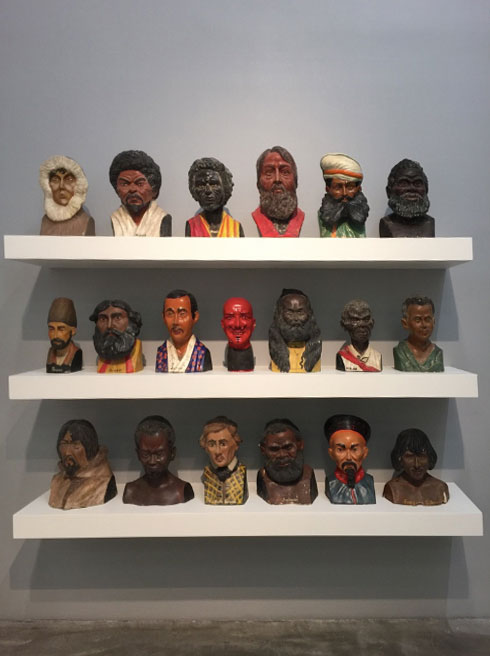
Detail of Jim Shaw’s “The Hidden World”.
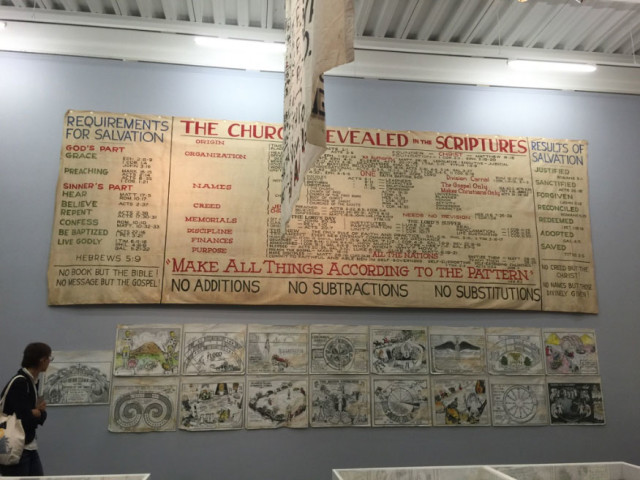
Detail of Jim Shaw’s “The Hidden World”.

Detail of Jim Shaw’s “The Hidden World”.

Detail of Jim Shaw’s “The Hidden World”.
4th Floor
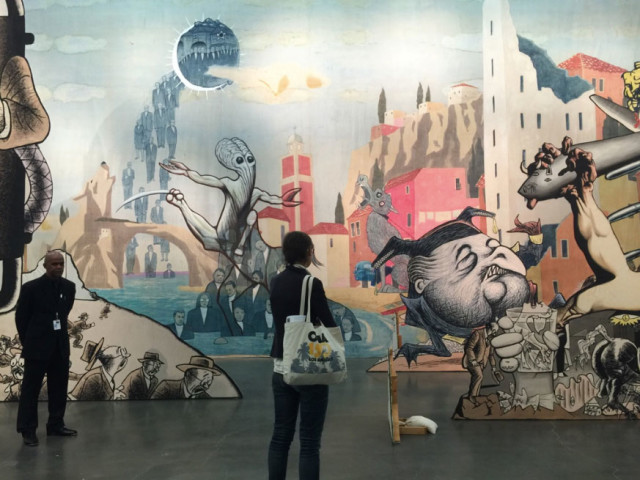
Jim Shaw, “The End is Here”, at the New Museum. Installation view.
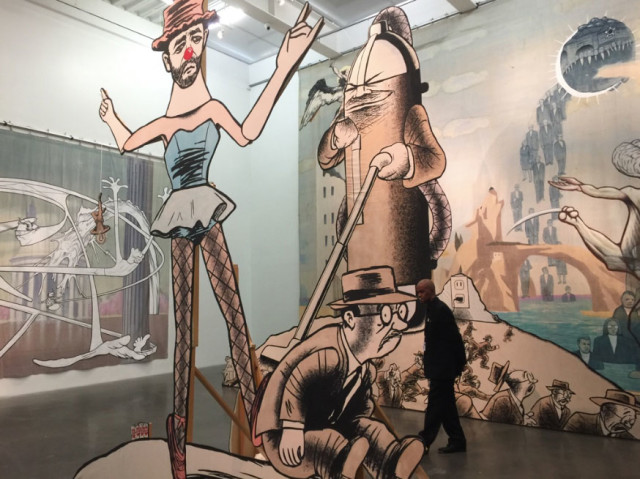
Jim Shaw, “The End is Here”, at the New Museum. Installation view.
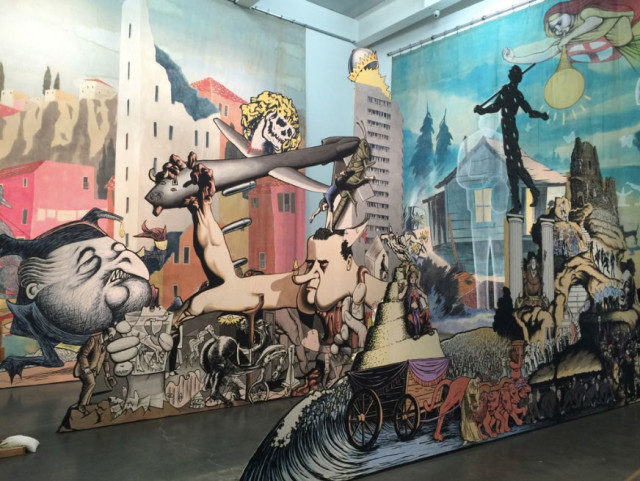
Jim Shaw, “The End is Here”, at the New Museum. Installation view.


Comments on this entry are closed.